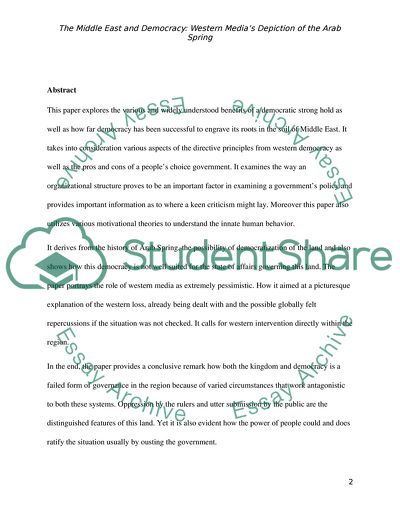Cite this document
(Western Media's Depiction of the Arab Spring Research Paper Example | Topics and Well Written Essays - 4000 words, n.d.)
Western Media's Depiction of the Arab Spring Research Paper Example | Topics and Well Written Essays - 4000 words. https://studentshare.org/politics/1837820-the-middle-east-and-democracy-western-medias-depiction-of-the-arab-spring
Western Media's Depiction of the Arab Spring Research Paper Example | Topics and Well Written Essays - 4000 words. https://studentshare.org/politics/1837820-the-middle-east-and-democracy-western-medias-depiction-of-the-arab-spring
(Western Media'S Depiction of the Arab Spring Research Paper Example | Topics and Well Written Essays - 4000 Words)
Western Media'S Depiction of the Arab Spring Research Paper Example | Topics and Well Written Essays - 4000 Words. https://studentshare.org/politics/1837820-the-middle-east-and-democracy-western-medias-depiction-of-the-arab-spring.
Western Media'S Depiction of the Arab Spring Research Paper Example | Topics and Well Written Essays - 4000 Words. https://studentshare.org/politics/1837820-the-middle-east-and-democracy-western-medias-depiction-of-the-arab-spring.
“Western Media'S Depiction of the Arab Spring Research Paper Example | Topics and Well Written Essays - 4000 Words”. https://studentshare.org/politics/1837820-the-middle-east-and-democracy-western-medias-depiction-of-the-arab-spring.


